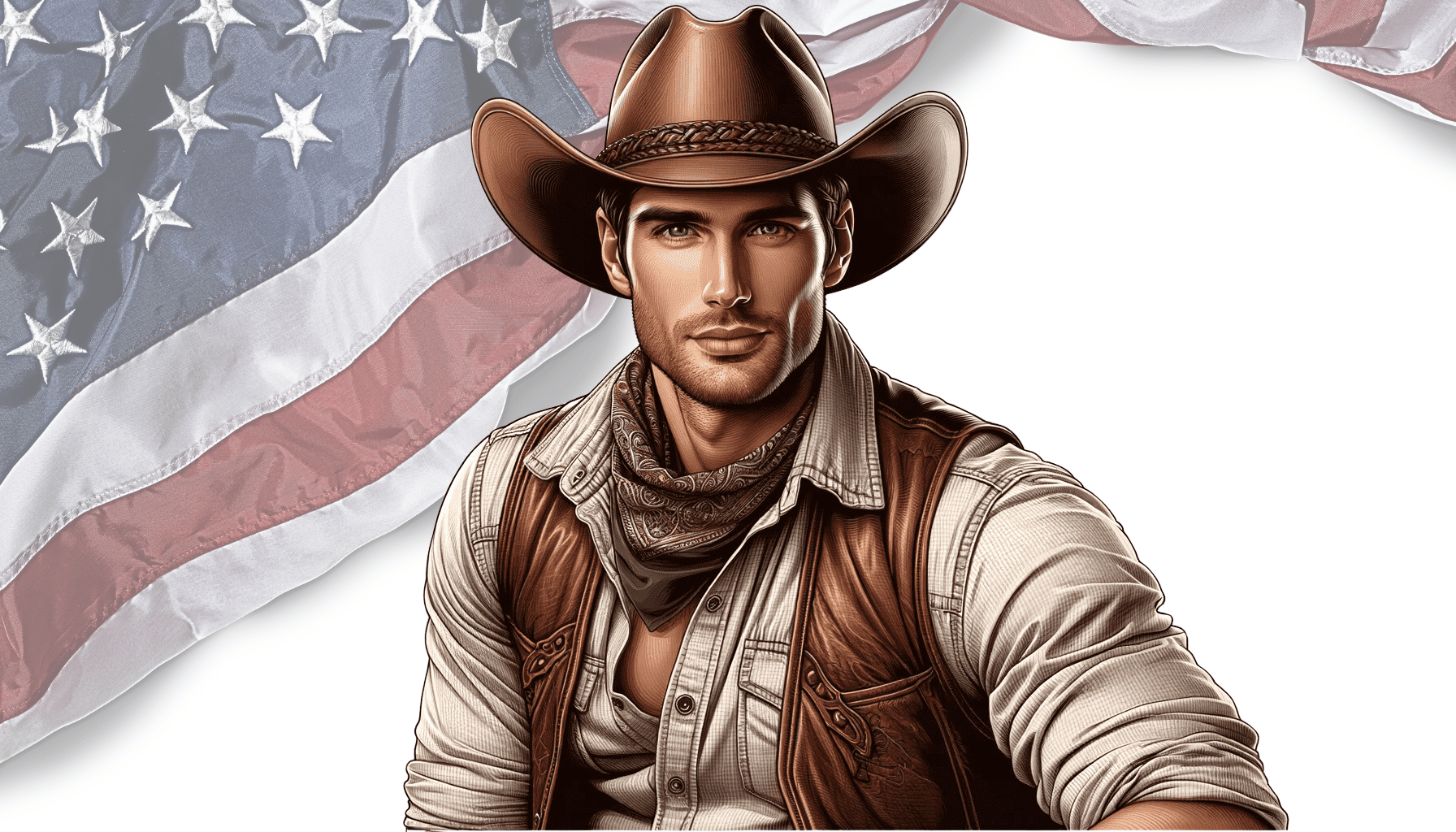Sharing is caring!
When we think about America, we often think about its rich history and diverse culture.
This diversity is also seen in traditional American clothing, which tells a story about the country’s past and its people.
From the cowboy attire of the Wild West to the colorful Hawaiian Aloha shirts, each piece of clothing has its own unique background.
These clothes are not just about looking good; they represent different parts of American history and culture.
In this article, we’re going to explore some of the most famous traditional clothes in America.
We’ll see how each style reflects a part of America’s story, from the early days of the settlers to the vibrant fashion of the 20th century. Let’s get started.
1. Buckskin Clothing
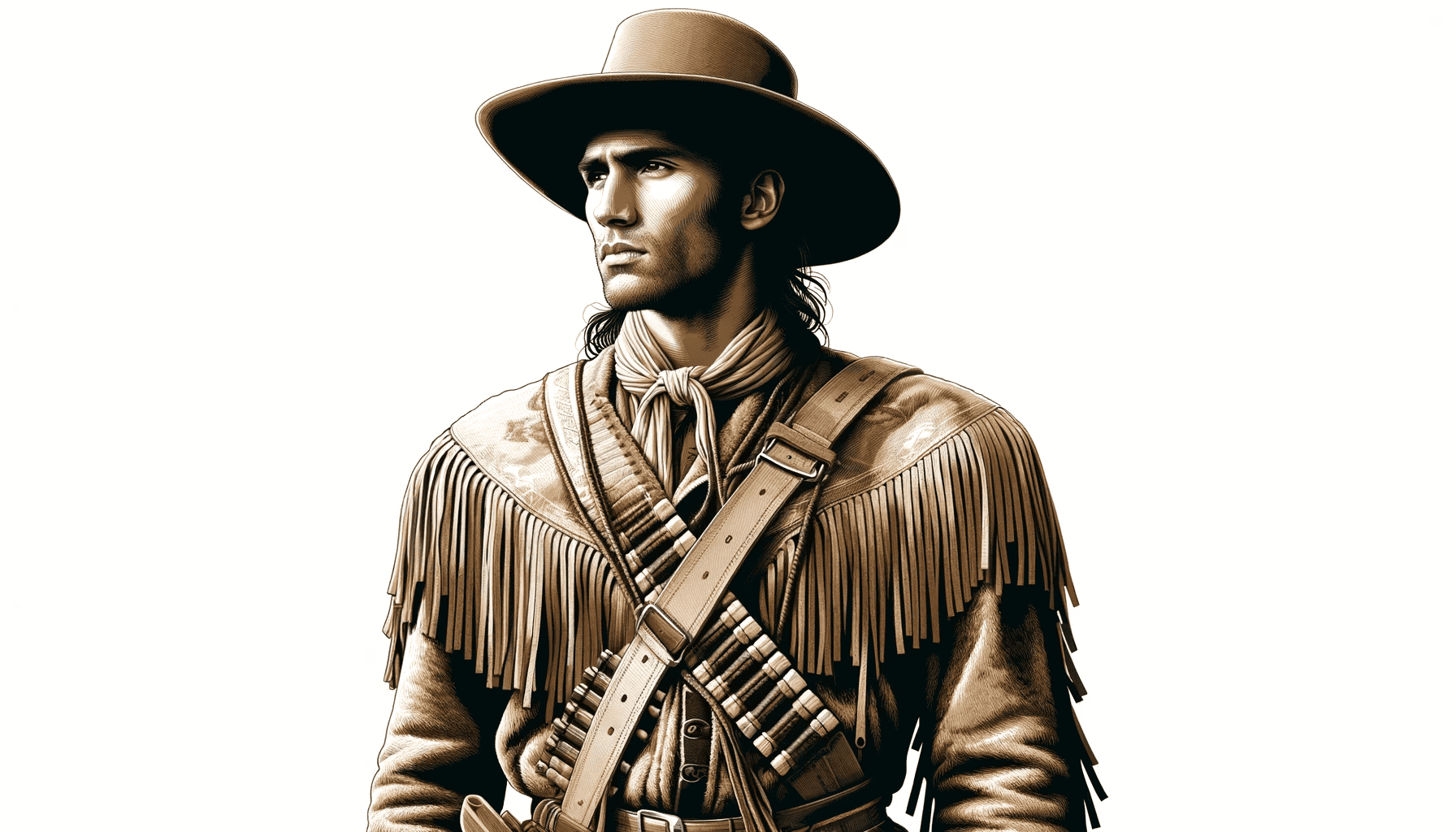
In the heart of America’s history, buckskin clothing holds a special place.
Originally worn by Indigenous Americans, this attire was made from the hides of deer or elk.
It was not only a practical choice due to its durability and comfort but also carried significant cultural importance.
The crafting of buckskin clothing was a meticulous process, often adorned with intricate beadwork or quill embroidery, reflecting the wearer’s tribe and status.
This attire symbolizes a deep connection with nature and respect for the animals providing for the community.
Fast forward to today, buckskin has transformed into a symbol of American heritage.
While no longer a necessity for survival, it’s often seen in cultural festivals and reenactments, celebrating the rich history of the indigenous peoples.
Buckskin jackets, pants, and moccasins are now modern fashion statements, albeit with a nod to their historical roots.
Wearing these items today is a way to honor the past and acknowledge the enduring legacy of America’s first inhabitants.
2. Cowboy Attire
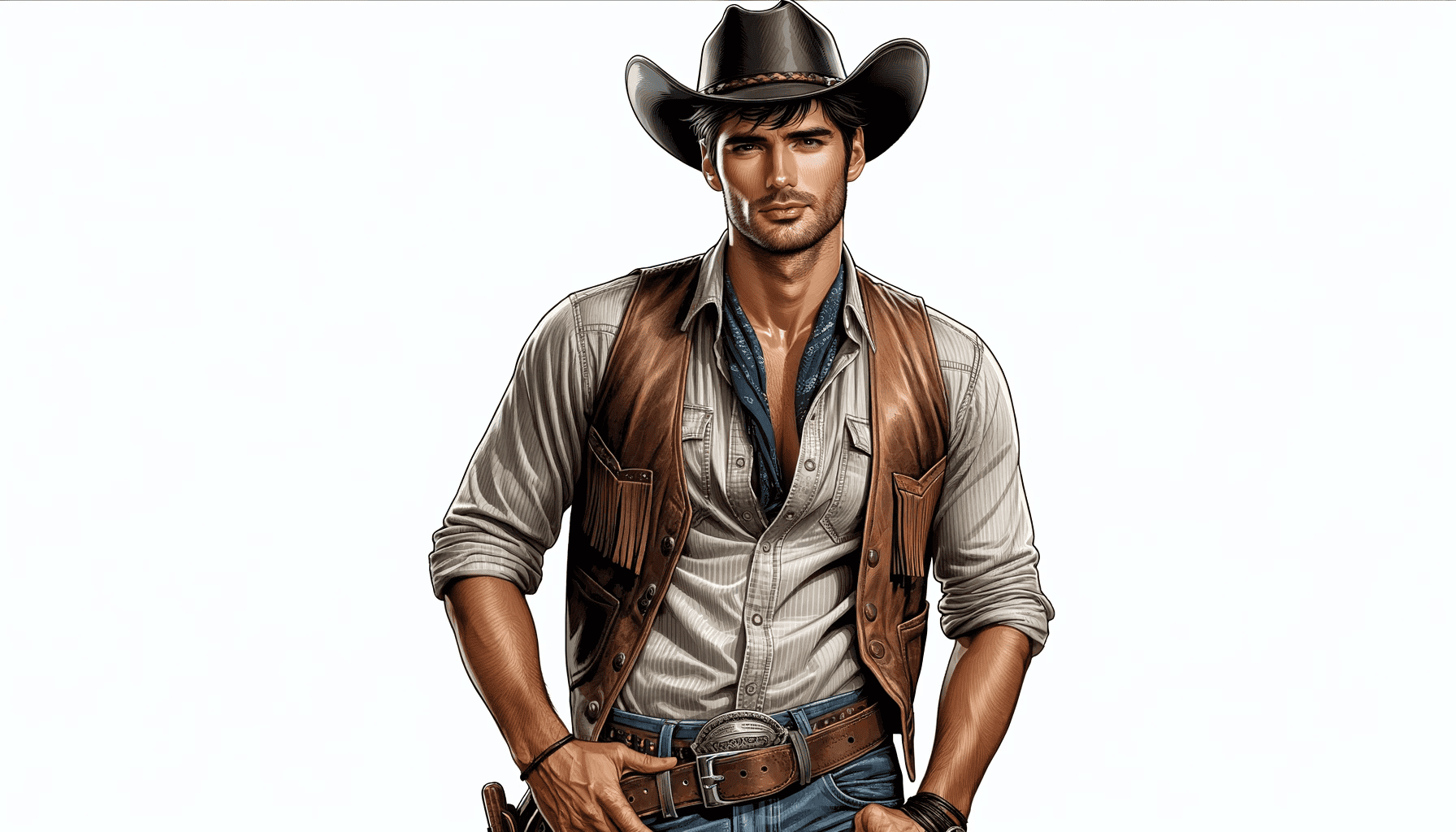
When you think of American traditional clothing, cowboy attire instantly comes to mind.
Originating in the 19th century, this style was born out of necessity for cattle herders in the West.
The iconic cowboy hat, initially designed to protect against harsh sun and rain, has become a universally recognized symbol.
Denim jeans, introduced by Levi Strauss for their durability, were perfect for the rough and tumble life of a cowboy.
Coupled with leather boots and a bandana, this attire was all about practicality and enduring the elements.
Today, the cowboy look has transcended its practical origins to become a cultural icon.
Across the world, it’s associated with American ruggedness and a free-spirited lifestyle.
Modern fashion has embraced cowboy boots and hats, making them staples in wardrobes far beyond the American West.
Music festivals, country concerts, and even everyday street fashion often feature elements of this classic American style.
It’s a testament to how functional clothing can evolve into a lasting fashion trend.
3. Amish Dress
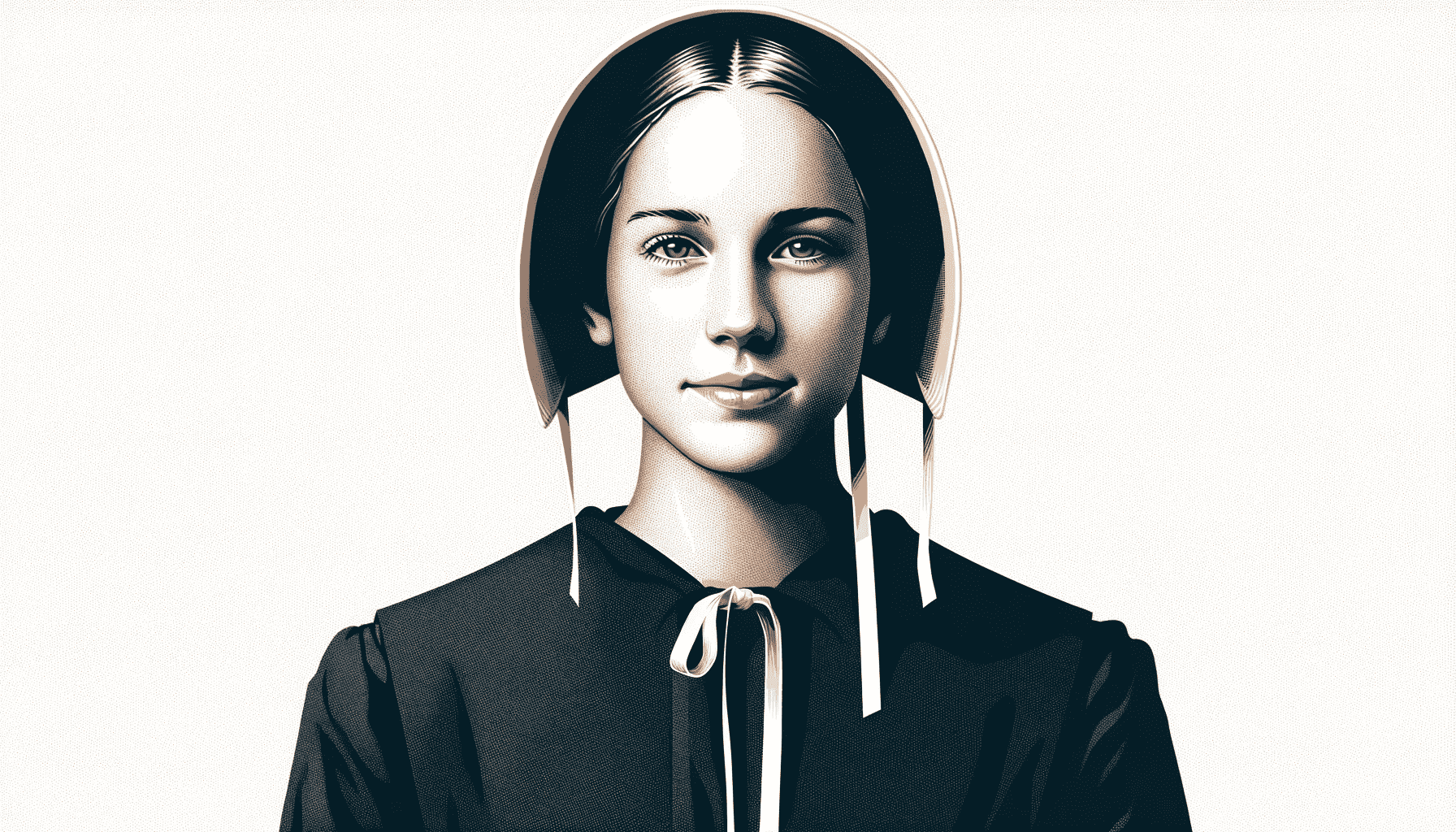
The Amish dress is a unique aspect of American traditional clothing, reflecting the values of the Amish community – simplicity and modesty.
Men typically wear plain, solid-colored suits, while women don traditional dresses with aprons and bonnets.
These clothes aren’t just a style choice; they’re a physical manifestation of the Amish commitment to a simple, unadorned life, free from the vanity and complexities of the modern world.
The lack of buttons, use of straight pins, and avoidance of bright colors are all deliberate choices in their attire.
4. Hawaiian Aloha Attire
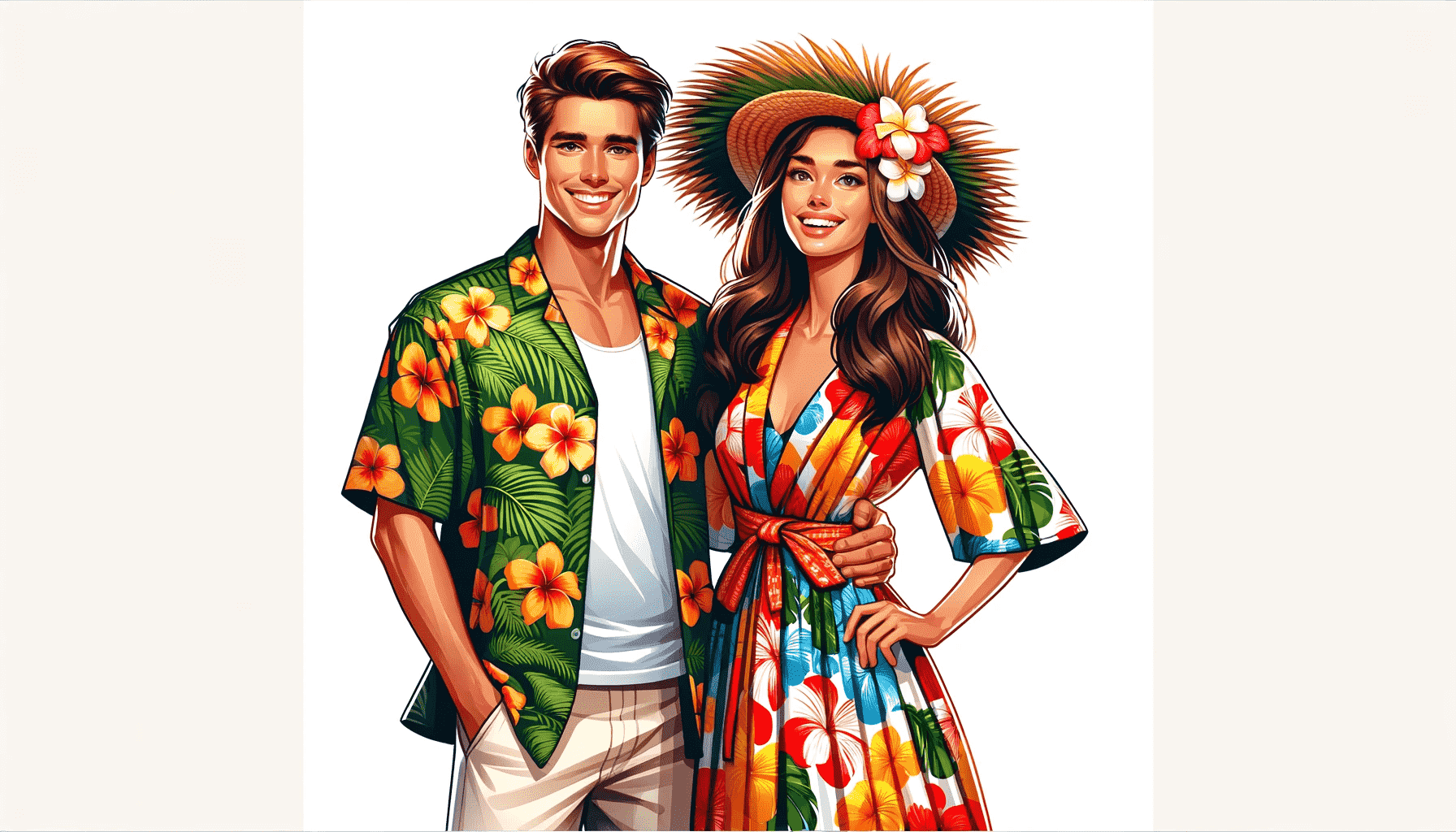
Hawaiian Aloha attire, synonymous with the islands’ relaxed and festive spirit, is perhaps one of the most recognizable American traditional clothes.
The Aloha shirt, with its bright, floral patterns, embodies the islands’ tropical beauty and laid-back vibe.
Initially popular among locals as a form of casual wear, these shirts became a symbol of the Hawaiian Islands and their unique culture.
Paired with lei necklaces and often worn at luaus and other cultural gatherings, Aloha attire is more than just clothing; it’s a celebration of Hawaiian heritage.
Over the years, Aloha wear has gained popularity far beyond the Hawaiian Islands.
Tourists often embrace these colorful shirts as a way to immerse themselves in the local culture.
In the professional setting, ‘Aloha Friday’ has become a tradition, where workers wear Hawaiian shirts as a way to usher in the weekend.
This practice symbolizes a break from the conventional, reflecting a broader desire for a more relaxed and joyful approach to life.
The global popularity of Hawaiian Aloha attire is a testament to its enduring appeal and the universal human desire for a touch of paradise in everyday life.
[Read: How To Style a Turtleneck With Jeans For Men]
5. Flannel Shirt
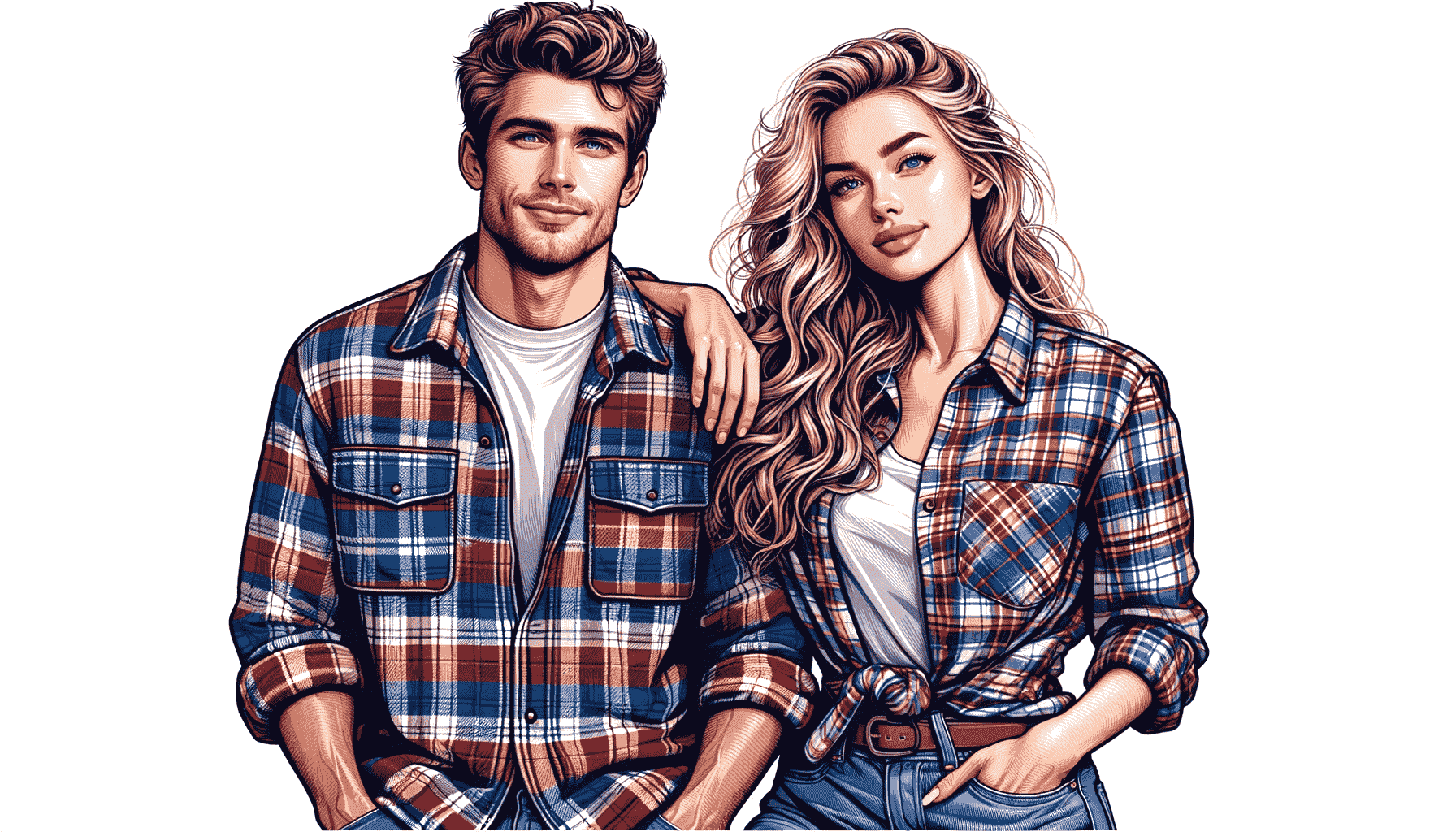
The flannel shirt is more than just a piece of clothing; it’s a symbol of rugged Americana.
Originating from the Welsh in the 17th century, flannel was initially made from wool and used to protect against the harsh elements.
However, it wasn’t until the 19th century that flannel shirts became popular in America, especially among outdoorsmen, farmers, and workers.
Their warmth, comfort, and durability made them ideal for battling the elements.
The classic red and black checkered pattern, often associated with lumberjacks, is now a fashion staple, symbolizing a connection to the rustic, hardworking spirit of early American life.
Today, flannel shirts have evolved beyond their functional roots. They’re a fashion statement that crosses boundaries between urban and rural, hipsters and traditionalists.
You can find them in a variety of colors and styles, worn by people from all walks of life. They’ve become synonymous with comfort and a laid-back lifestyle.
Whether buttoned up, layered over a T-shirt, or tied around the waist, the flannel shirt remains a timeless piece of American fashion, blending history with modern style.
6. Varsity Jacket
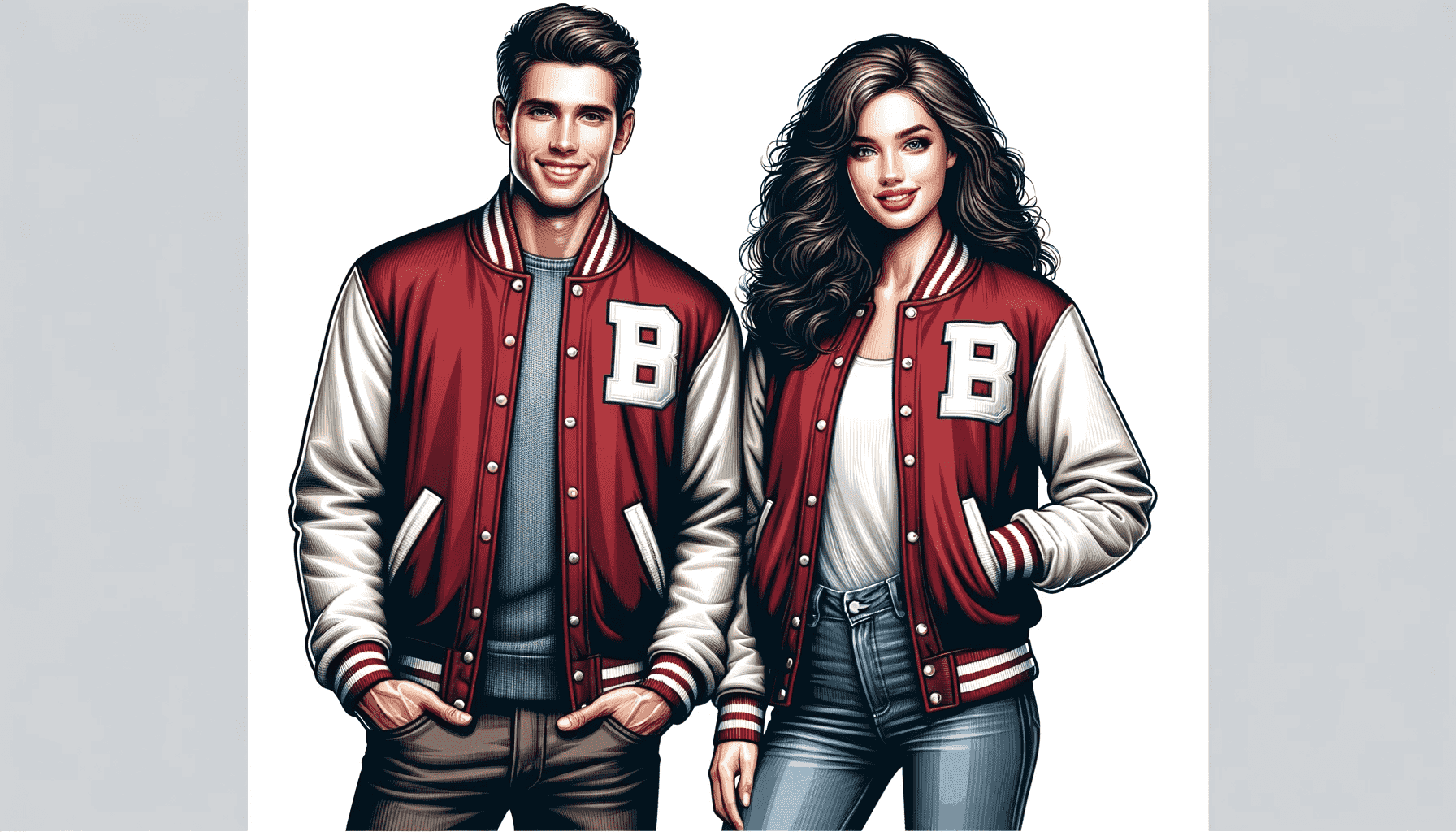
The varsity jacket, also known as the letterman jacket, is a quintessential symbol of
American high school and college culture. Its origins trace back to the Harvard University baseball team in 1865, where players were awarded wool jackets with leather sleeves as a badge of honor.
The letter ‘H’ was sewn onto the chest, signifying their status as varsity team members. This tradition quickly spread to other schools and sports, becoming a coveted symbol of athletic achievement.
The jackets became more than just sports attire; they were a status symbol, representing school spirit and personal accomplishment.
7. Poodle Skirt of the 1950s
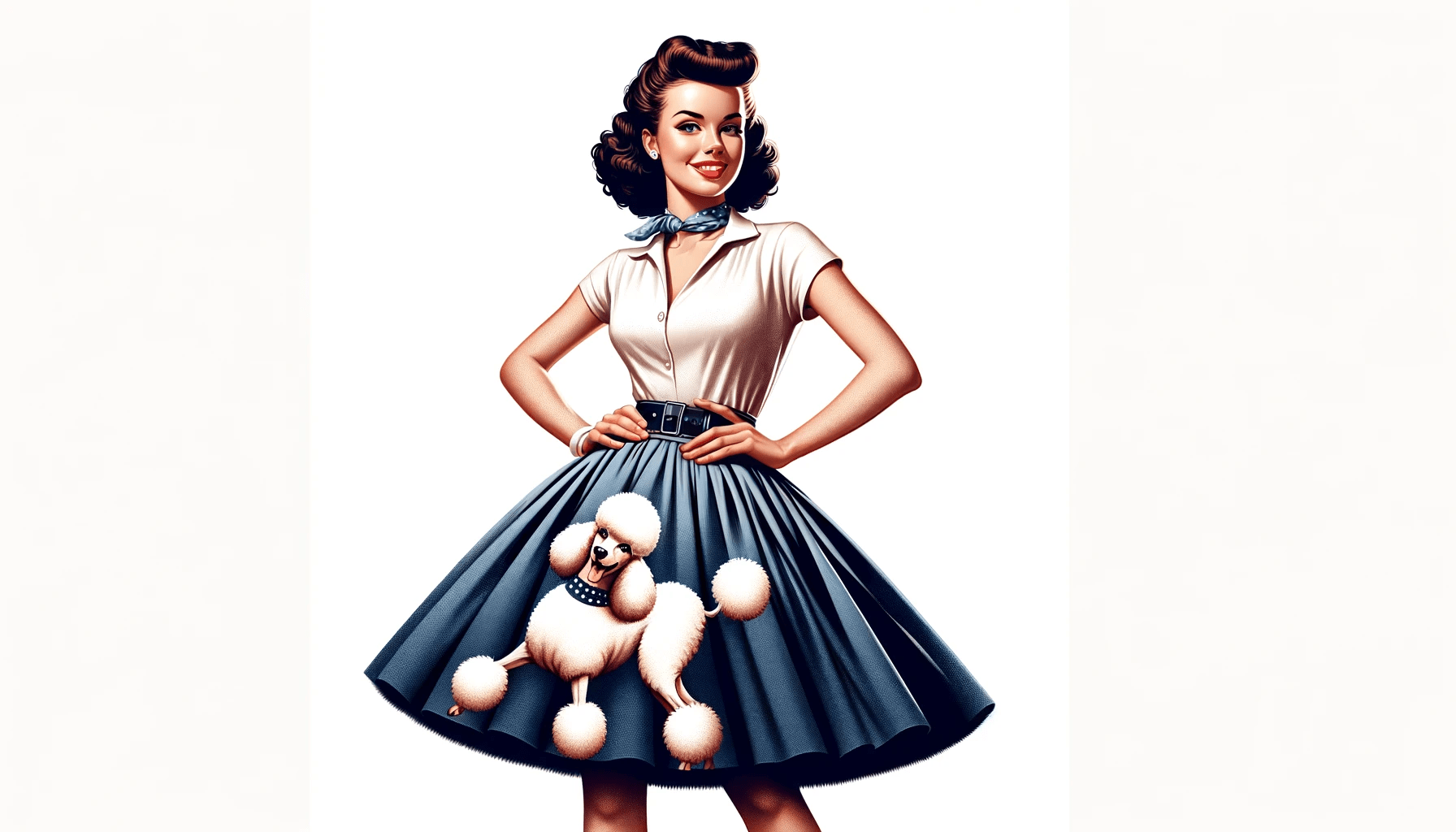
The poodle skirt is a fun and flirty icon of 1950s America. This wide-swinging skirt, typically made of felt and featuring a whimsical poodle appliqué, became popular among teenage girls during this era.
Its creation is often credited to Juli Lynne Charlot, who designed the first poodle skirt in 1947.
What set these skirts apart was their circle cut, which allowed them to flare out dramatically during the popular dance moves of the time, like the Swing and the Jitterbug.
The poodle skirt wasn’t just about fashion; it was a symbol of youthful exuberance and the post-war American spirit.
[Interesting: 8 Mother-Son Marriages In History
8. Tie-Dye of the 1960s and 70s
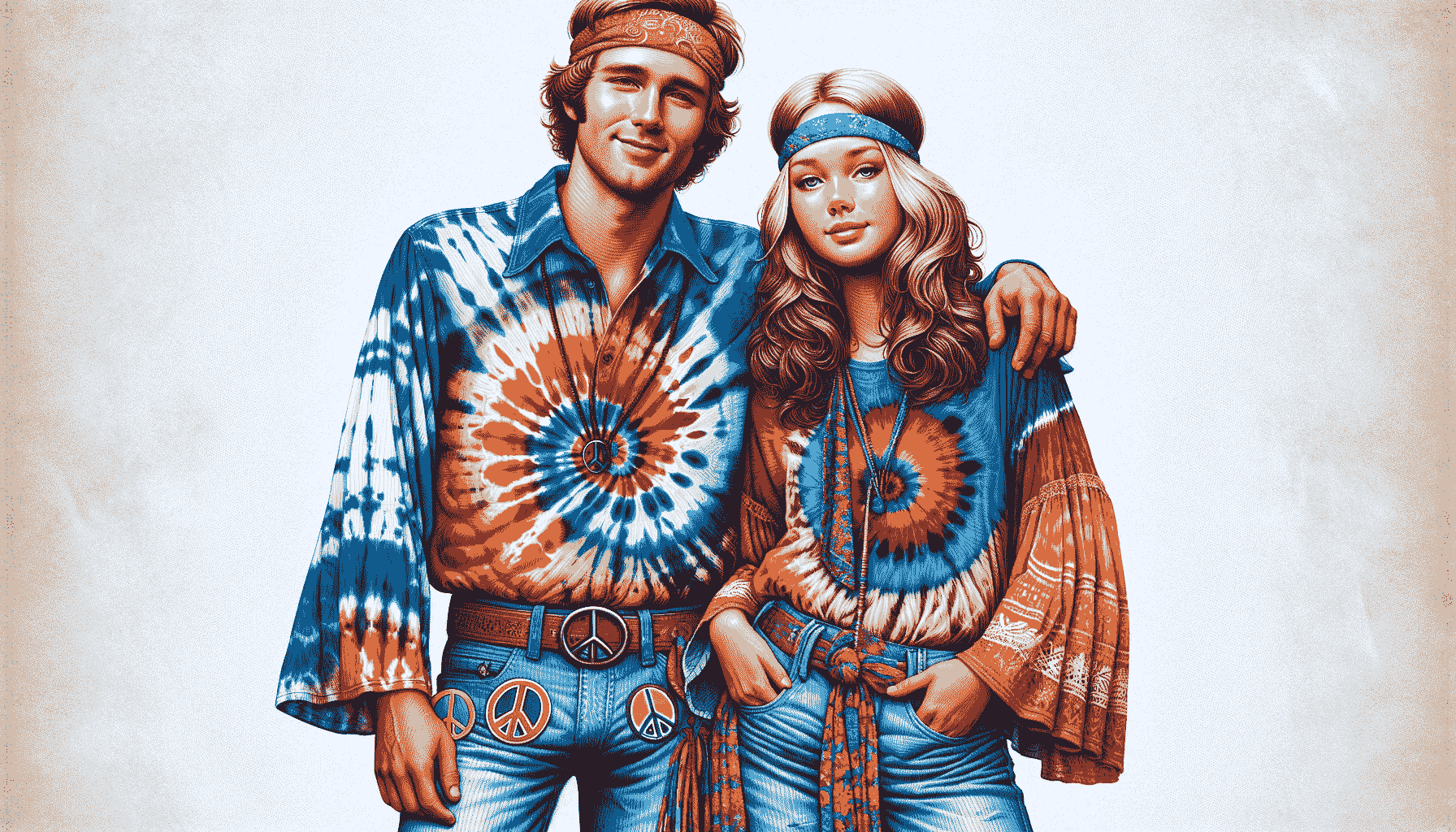
Tie-dye clothing is synonymous with the counterculture movement of the 1960s and 70s in America.
Although tie-dye techniques have existed for centuries in various cultures, the American version became a symbol of rebellion, freedom, and peace.
It was popularized by the hippie movement, with its bright, swirling colors and unique patterns reflecting the era’s call for freedom of expression and a break from conventional norms.
Each tie-dye garment was unique, a wearable form of art, expressing individuality and a rejection of the mass-produced fashion of the time.
9. Colonial Dress
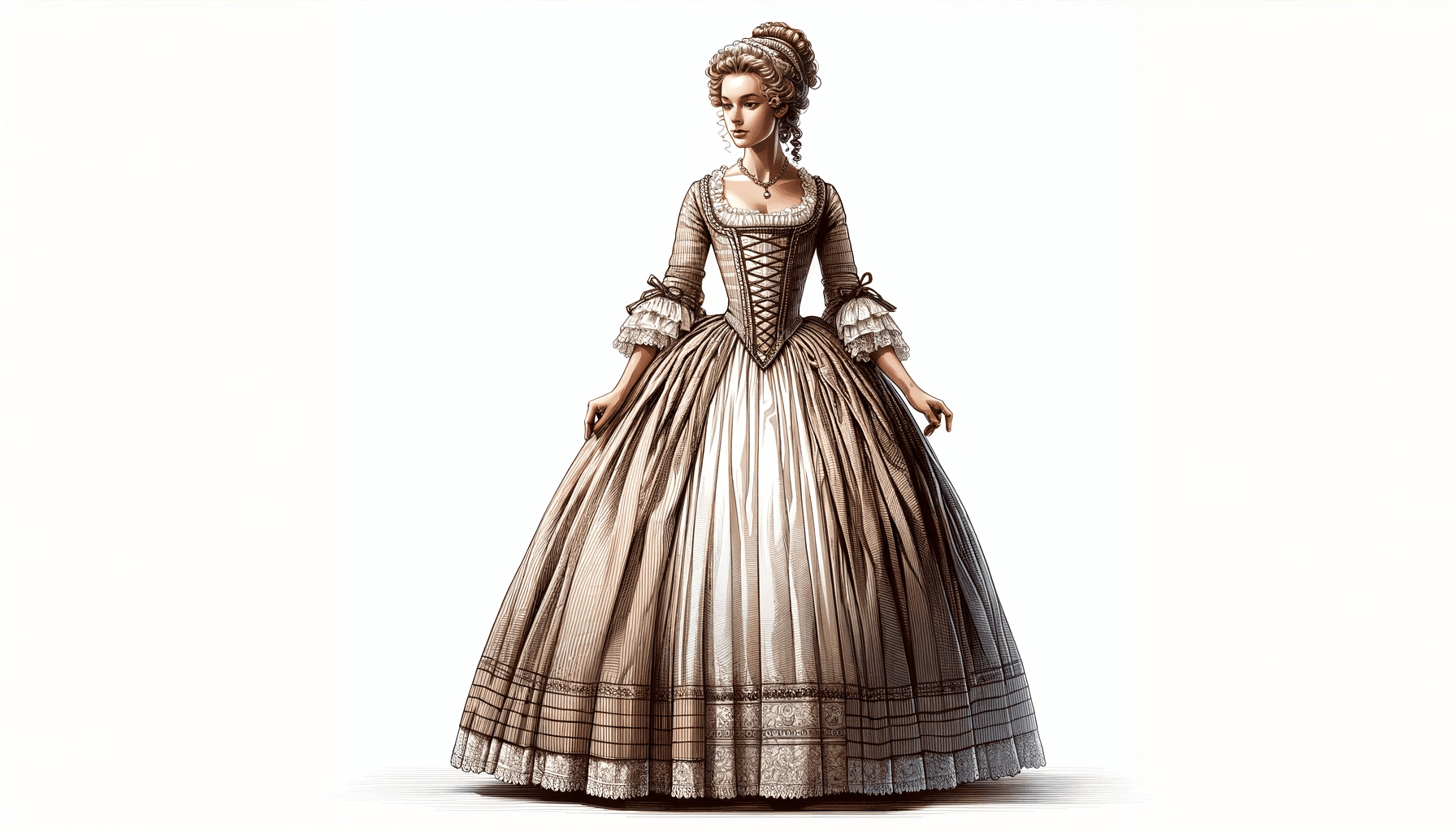
The Colonial era in America, spanning from the 17th to the early 18th century, introduced a distinctive style of dress that was both practical and influenced by European trends.
Men typically wore breeches, a waistcoat, and a coat, while women donned long gowns with petticoats.
These clothes weren’t just about looking good; they were adapted to the new world’s demands. Wool, linen, and cotton were common materials, chosen for their durability and suitability to the American climate.
This period’s fashion reflects the settlers’ pragmatic approach to life, where functionality often took precedence over style.
Yet, there was an element of elegance and formality in colonial attire. Clothing was a status symbol, with wealthier colonists often wearing finer fabrics and more elaborate designs.
For special occasions, gowns and suits would be more ornate, demonstrating the influence of European fashion trends.
Today, colonial dress is often showcased in historical reenactments and educational settings, providing a tangible link to America’s early days.
It reminds us of a time when America was just beginning to form its identity, blending practical needs with the cultural heritage of its settlers.
[Also Read: How to Choose the Perfect Dress for Your Body Type]
10. Nautical Attire
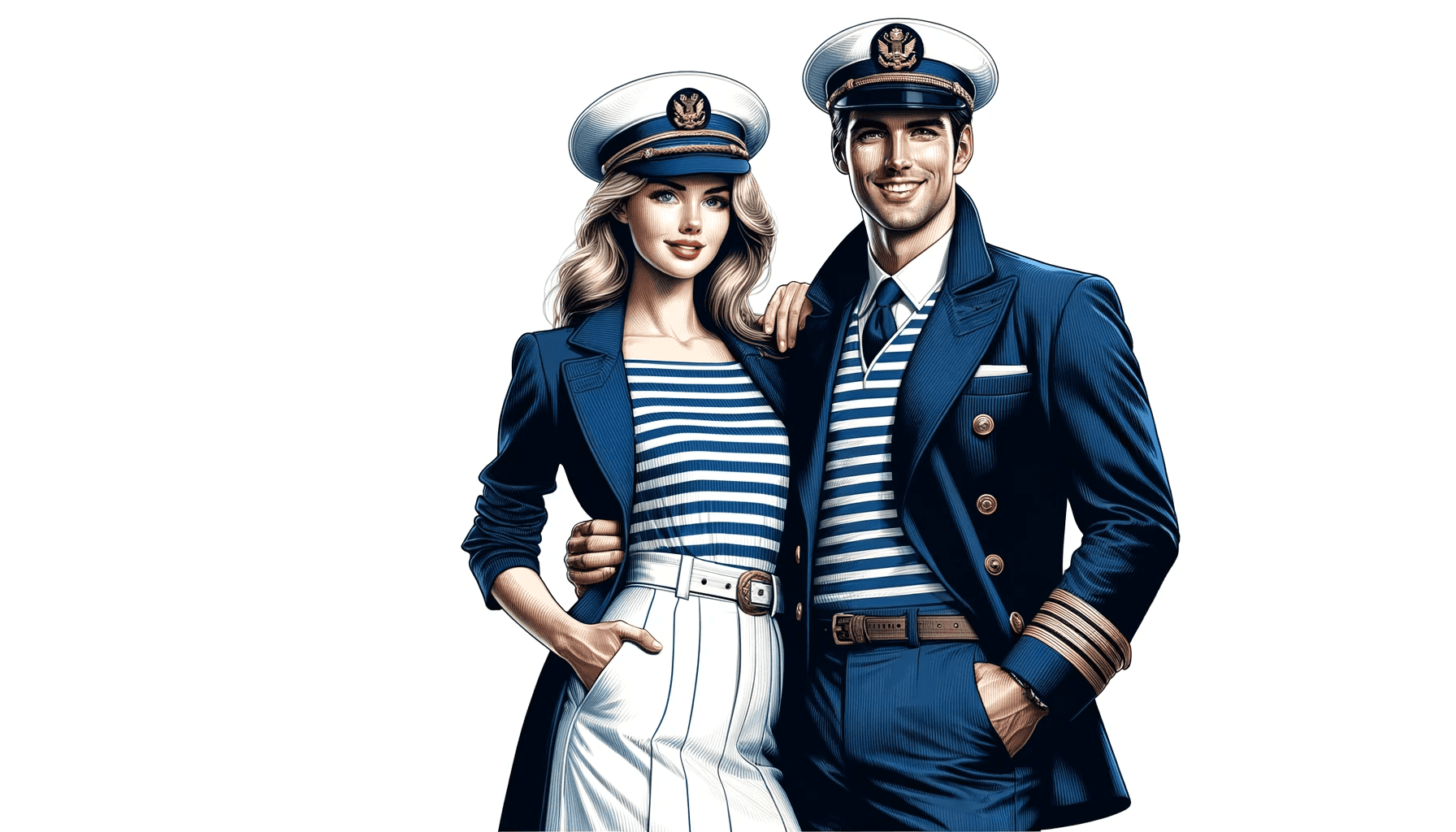
Nautical attire, associated with sailors and the sea, holds a special place in America’s traditional clothing repertoire.
Originally, this style was born out of necessity for life at sea – think of the classic sailor’s uniform with bell-bottom trousers, a striped shirt, and a peaked cap.
This attire was designed for functionality: bell-bottoms were easy to roll up when washing decks, and stripes helped in spotting sailors who fell overboard.
It’s a style deeply rooted in the practical challenges of sea life, reflecting the ingenuity of sailors in adapting their clothing to their environment.
Today, nautical fashion has sailed far beyond its origins. It’s seen as a symbol of casual, timeless elegance.
The clean lines, simple colors, and comfortable fit of nautical clothing have made it a favorite in casual fashion.
Designers often draw inspiration from this style, creating collections that evoke the freedom and adventure of the sea.
Wearing nautical attire is no longer just for sailors; it’s a way for anyone to capture the spirit of exploration and a love for the open water.
11. Flapper Dress of the 1920s
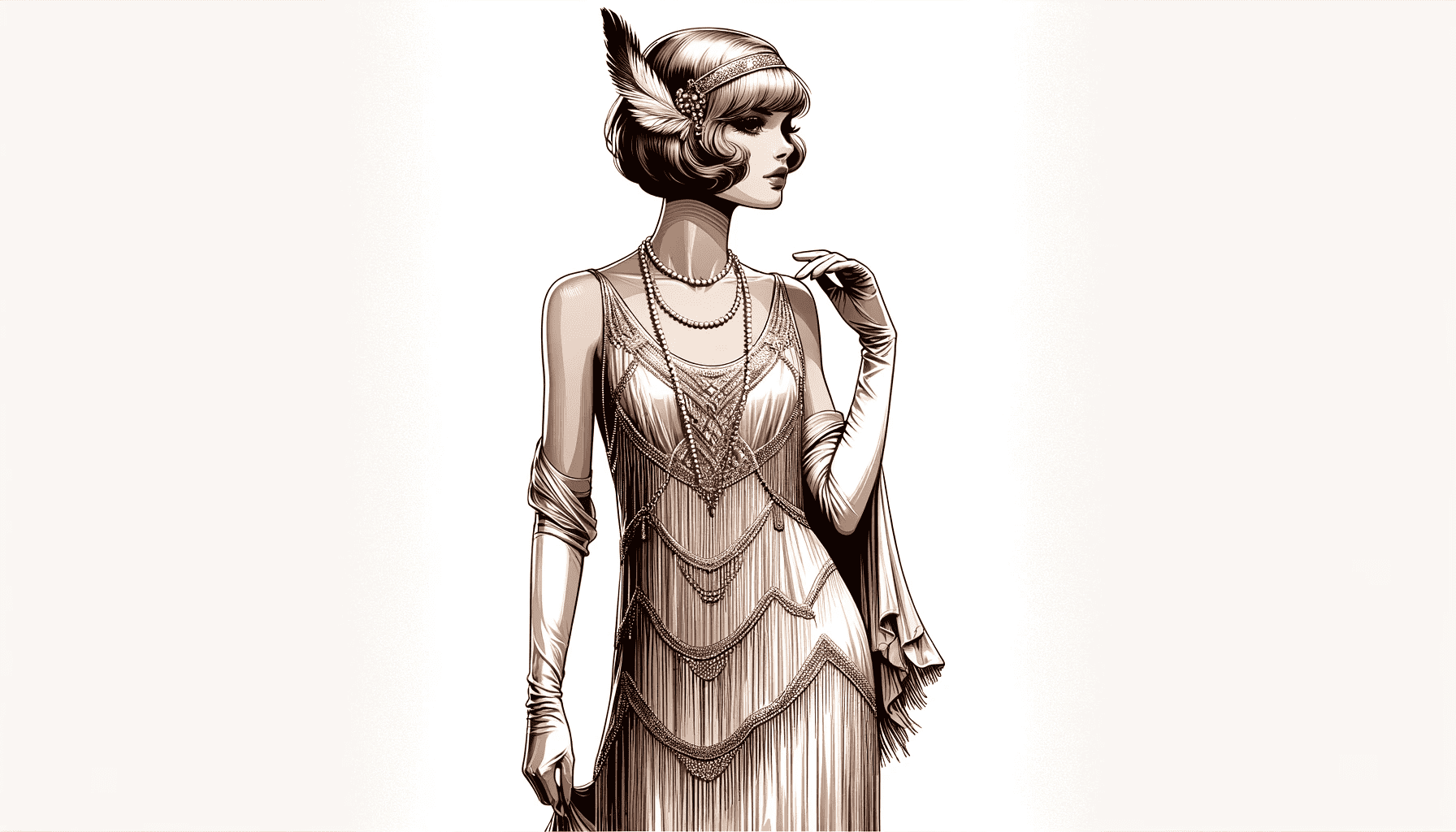
The 1920s in America brought about a dramatic shift in women’s fashion, epitomized by the iconic flapper dress.
This style broke away from the restrictive corsets and long skirts of the past, introducing shorter hemlines, dropped waistlines, and a looser fit.
The flapper dress was a bold statement of independence and modernity, reflecting the era’s social changes.
Women were embracing new freedoms, from voting rights to a more prominent presence in the workforce, and their fashion choices mirrored this shift.
The flapper dress wasn’t just about style; it was a symbol of rebellion against traditional norms. Embellished with sequins, fringe, and beads, these dresses were made for the jazz-filled, dance-crazed parties of the Roaring Twenties.
They swayed to the music, capturing the exuberance of the era.
Today, the flapper dress is a popular choice in vintage fashion and costume parties, reminding us of a time when America was redefining itself, and fashion was at the forefront of cultural change.
12. Zoot Suits of the 1940s
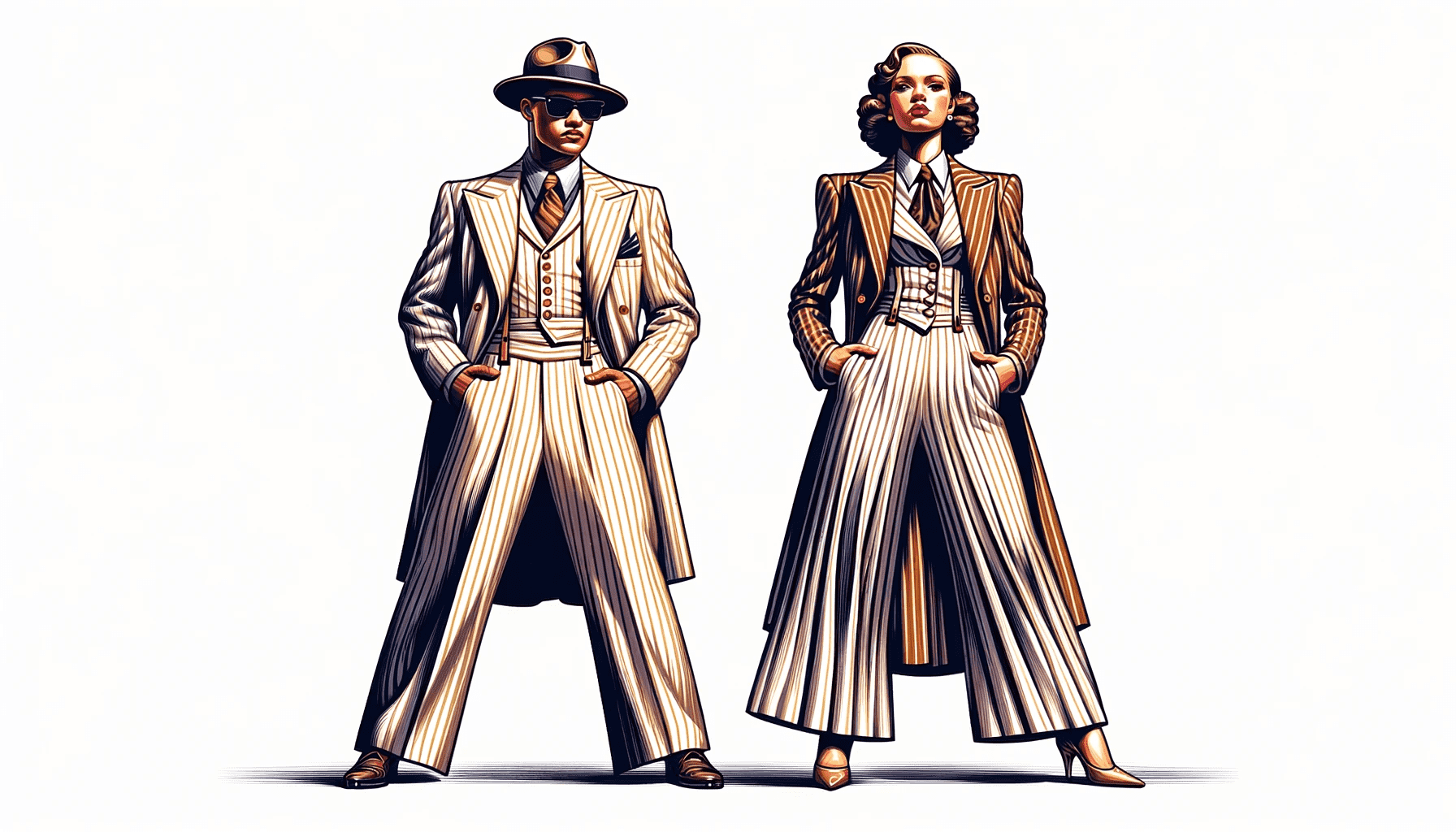
The zoot suit, with its exaggerated, oversized look, was a major fashion statement in the 1940s in America.
Characterized by high-waisted, wide-legged, tight-cuffed trousers, and a long coat with wide lapels and wide padded shoulders, this style was popular among young men, especially in African American, Italian American, and Latino communities.
It wasn’t just a style; it was a statement of identity and defiance in a time of racial tension and economic hardship.
Wearing a zoot suit was a way to stand out, to claim visibility in a society that often marginalized these communities.
The significance of the zoot suit went beyond fashion. It became a symbol of cultural and political resistance, especially during the Zoot Suit Riots of 1943 in Los Angeles, where the style was targeted as unpatriotic and extravagant during wartime.
Today, the zoot suit is remembered as much for its bold style as for its role in cultural history.
It’s a reminder of how fashion can be a form of expression and protest, a way for marginalized groups to assert their identity and challenge societal norms.
FAQs
What Are Traditional Clothes in America?
Traditional clothes in America are a mix of different styles that show the country’s history and cultural diversity.
Each style, like the cowboy attire from the Wild West or the Aloha shirts from Hawaii, tells a story about a specific time or group of people in America.
These clothes aren’t just about fashion; they help us remember important parts of America’s past and the many different people who have lived there.
Why Are These Traditional Clothes Important?
Traditional clothes are important because they help keep the history and culture of America alive.
They remind us of the different people and events that shaped the country.
For example, Native American buckskin clothing shows respect for nature and heritage, while flapper dresses from the 1920s remind us of a time when women were starting to enjoy more freedom.
These clothes are like a history book you can wear, showing us how America has changed and grown.
Can I Still See These Traditional Clothes Today?
Yes, you can still see these traditional clothes today! Some are worn at special events like cultural festivals or historical reenactments, where people dress up to remember the past.
Others, like flannel shirts or tie-dye, have become part of everyday fashion.
They’re not just historical items; they’re a living part of America’s culture, showing how styles from the past can still be cool and meaningful today.
Sharing is caring!
